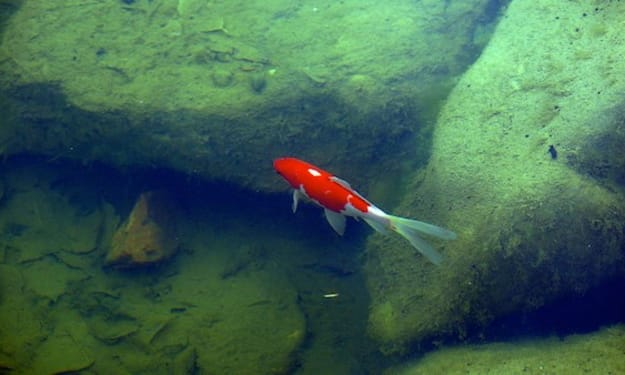Solar energy transmits heat to Earth, but why is space between the sun and Earth cold?
The transfer of heat is more complex than we think, as is the temperature itself

Heat and temperature
The universe is full of stars, each of which is like a giant heat emitter, transferring its heat outward.
This heat is transferred to other bodies, such as planets, asteroids, and even icy-looking comets.
However, the star is unable to heat the space between it and the planets, which is why.
What's going on with space's low temperature of minus 270°C?
For example, when it comes to the hottest planet in our solar system, Mercury is the first planet that comes to mind because it is the closest to the Sun.
However, according to the detection of Mercury, the side of Mercury facing the Sun is indeed very hot, reaching a staggering 428 degrees Celsius.
However, the side facing the sun is colder than the coldest place on Earth, at minus 190 degrees Celsius.
Why is it that Mercury, the closest planet to the Sun, has such a huge temperature difference?
This brings us to the transfer of heat and the performance of temperature. There are three ways to transfer heat, the most common is heat conduction, such as people frying and cooking, by direct contact with the heat source to obtain heat.
The second is heat convection, which occurs mainly in fluids, such as what we often hear about the cold Siberian air, subtropical high pressure, the Peruvian cold current, the Gulf of Mexico warm current, etc.
The third type of heat transfer is thermal radiation, which does not require a medium and is a common mode of heat transfer in the universe.
So how is the temperature of an object expressed? The answer is the motion of the particles inside the matter.
The more intense the movement, the higher the temperature of this object will be.
Any object is composed of various particles, only the degree of motion of the various particles is not the same.
If two objects receive the same amount of heat, the one with the more intense thermal motion, the higher the temperature.
The temperature of different substances in the same place on earth will be different, such as the temperature over the equator and the temperature of the surface of the equator are not the same.
This is because the temperature of the ground is produced by the internal movement of soil and rock particles after they have received radiant heat energy from the sun.
The temperature, on the other hand, is the movement of the various gas molecules in the atmosphere in response to the sun's radiant heat, which is equivalent to the internal energy of the atmosphere.
From this, we see that as long as the internal particles are in motion, then matter will have a temperature. The space environment, on the other hand, is a vacuum, and heat can be transferred in it, but it does not exhibit temperature.
This is why there are so many stars in the universe, some of them are still giants, but it is impossible to heat the vacuum in any way.
The hot sun and the cold space
Why is the sun so hot? It's because the sun is a cosmic nuclear power plant.
The sun is made up of trillions of tons of hydrogen atoms, which are involved in fusion reactions that release enormous amounts of energy, the vast majority of which is heat.
The sun's heat is transferred to various celestial bodies in the form of thermal radiation, so no medium is needed.
The space environment is a vacuum, it will not have particles to receive the heat from the sun, and there will be even less particle motion, which makes it too cold compared to other celestial bodies.
Sun and Earth
It is reasonable to say that there is no particle motion, the temperature at this moment should be absolute zero - 273 ℃, why the temperature between the sun and the earth is - 270 ℃, and the extra 3 ℃ were to come from?
The space environment between the sun and the earth is a vacuum, this vacuum does not mean that nothing exists "everything is empty", but relative to the standard atmospheric pressure of the earth.
There is a small amount of dust in space, which somehow gets some energy from the sun.
Only the density of this dust in space is too small compared to the celestial bodies, so only 3 ℃ temperature is generated.
This dust comes from the various impacts of the solar system over the past 4.6 billion years, and some of it is even the "oldest" remnants of the original nebula.
Absolute zero is a physical concept, but it exists only in theory and is not found in the real universe.
The heat radiation from the Sun has another characteristic: it travels in a straight line and does not turn around.
If it is blocked by other objects in space, then it does not receive the heat of the sun.
For example, a human satellite, when it is facing the sun, must endure the heat coming directly from the sun, when the surface of the satellite can reach 200 ℃.
When the satellite orbits to the back of the Earth, it is completely invisible to the sun and does not receive the sun's heat, in the cold space environment, to endure the cold of minus 270 ℃.
Such a "fire and ice" will make the satellite's materials produce extreme thermal expansion and contraction if the use of ordinary materials on Earth is completely impossible.
So the artificial satellite material must be both inside and outside, and can withstand both high temperatures, but also can withstand the cold.
The closest thing to absolute zero exists
Astronomers once suspected that absolute zero existed on Pluto because it was so far from the sun, which was once thought to be the coldest place in the solar system.
It turns out that Pluto's temperature is still some way from absolute zero.
Although Pluto is far from the sun, it is still in the energy system of the solar system, then it will receive the heat of the sun anyway.
As long as it receives heat, then the particles inside Pluto will move, but this movement is not as violent as the eight planets.
Pluto is suspected to have absolute zero
As human-launched probes successfully reached Pluto and began to explore it, the surface temperature of Pluto was measured to be 229°C below zero, a temperature much higher than absolute zero.
It was only later that astronomers discovered that the existence of true proximity to absolute zero did not care about its distance from the Sun, but rather whether it was essentially in particle motion.
It was at this time that astronomers discovered that the vacuum of space in the universe, other than the terrestrial body, has a temperature of 270°C below zero, which is the closest thing to absolute zero that exists.
We believe that the empty cosmic matter still exists invisible to humans, as long as there is matter, then it will have internal energy, no matter how low the temperature is, it can not be lower than absolute zero.
So, if in the universe, there exists a certain space that is empty of matter, even dust, then will it be absolute zero?
The answer might also be no because there is dark matter.
Dark matter and the temperature of space
Dark matter is considered invisible to humans, but it is real in the universe, and it is different from all the matter that makes up celestial bodies.
Dark matter is the main part that makes up the universe, occupying 85 to 90 percent of the universe.
Astronomers believe that dark matter is involved in the interactions in the universe and therefore has mass.
It is a particle, but unlike all the particles we know, which suggests that there are unknown particles in the universe that we think of as a vacuum.
Perhaps that 3°C above absolute zero may not be a solo of dust, but more like a whisper of dark matter.
If the existence of dark matter can be confirmed in the future, then absolute zero might be just a theory, and it does not exist in the universe.
Humans have tried to create absolute zero, and in 1957 created an ultra-low temperature of 0.00002K, which is the closest to absolute zero that exists.
Absolute zero is a temperature value that can only be reached infinitely but cannot be reached.
We on Earth seem so simple to heat transfer, temperature in the universe is so complex and even full of various mysteries.
If you think about it, humans are also part of the universe, although small as dust, we are also composed of various particles, and our body temperature remains at about 36 ℃, which is also the result of thermal movement.
Look at it this way, we humans are also very mysterious.
The universe is like this, from the Big Bang's 10 billion degrees Celsius to approaching absolute zero, the temperature span is very huge, and it also makes it full of various dangers.
The universe is more complex than we think
Humans walking in space is the real dance between ice and fire, with the scorching heat of the sun on one side and the cold space on the other.
About the Creator
Enjoyed the story? Support the Creator.
Subscribe for free to receive all their stories in your feed. You could also pledge your support or give them a one-off tip, letting them know you appreciate their work.






Comments
There are no comments for this story
Be the first to respond and start the conversation.